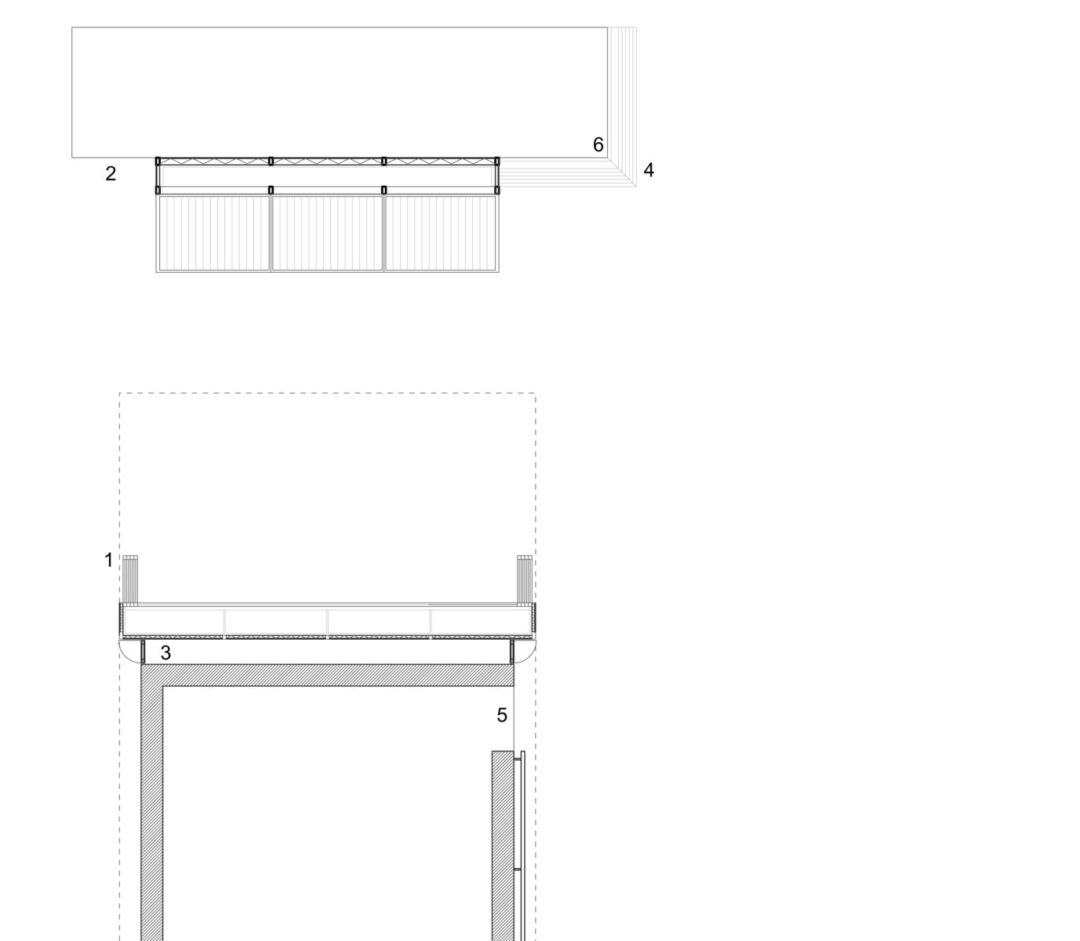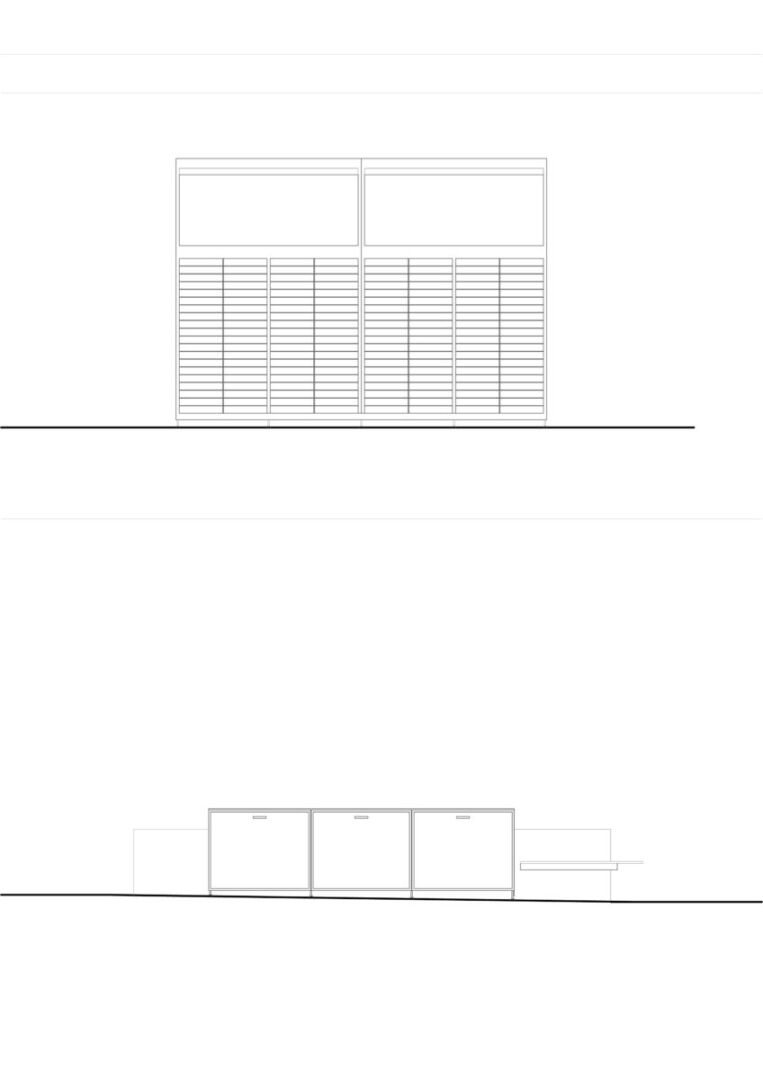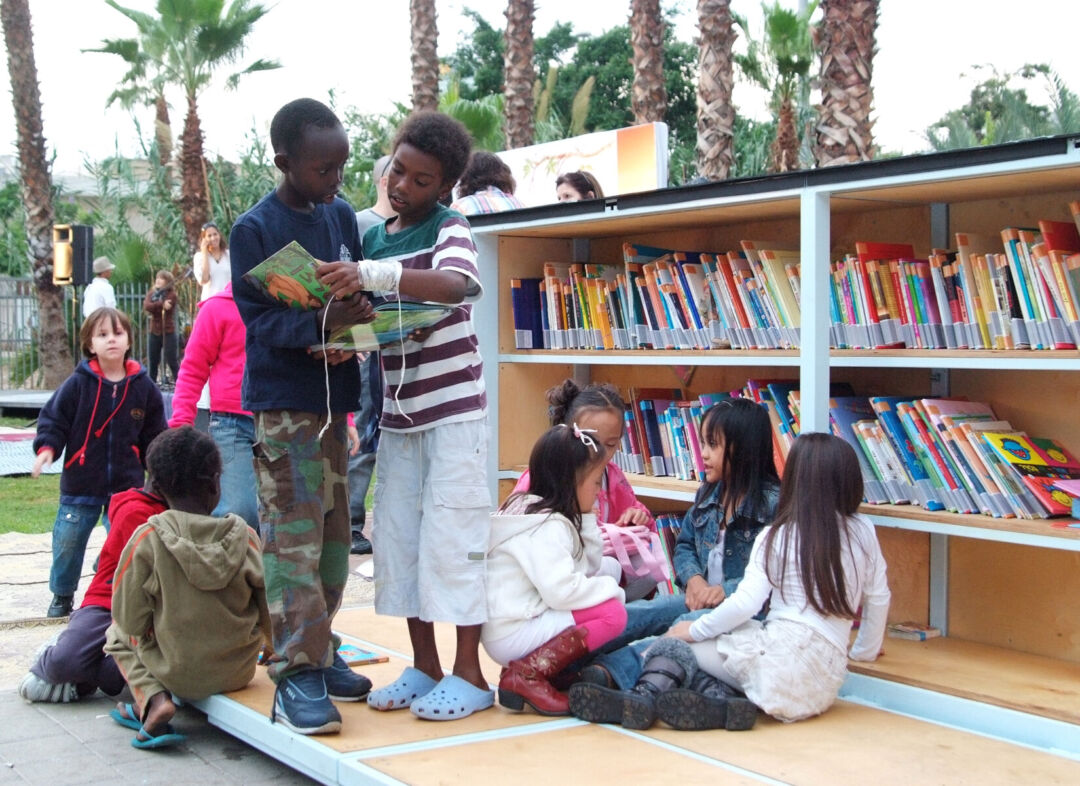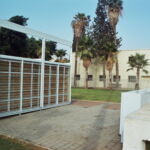Levinski Library: A Haven for Refugees in Tel Aviv
Project's Summary
The Levinski Library stands as a beacon of hope and knowledge for refugees and migrant workers in Tel Aviv, Israel. Founded in 2010 by Yoav Meiri Architects, this innovative architectural project redefines the concept of a library by combining functionality with a profound social mission. Nestled in the vibrant Levinski Park, adjacent to the bustling central bus station, the library serves as a sanctuary for those seeking solace and inspiration through literature. The design philosophy behind the library is rooted in the belief that access to books is not just a luxury, but a fundamental human right that should be available to everyone, regardless of their status. With its open design, the library invites individuals from all walks of life to engage with its collection without fear or intimidation, fostering a sense of community and belonging.

This remarkable structure consists of two distinct yet complementary bookcases that are ingeniously supported by the walls of a public shelter in the park. The taller bookcase is tailored for adult readers, featuring a transparent facade that allows natural light to illuminate the books from within. At night, this glowing display transforms the library into a magical oasis, drawing in passersby and sparking curiosity. In contrast, the shorter bookcase, designed specifically for children, welcomes young readers to sit on its swing-down doors, creating a playful and inviting space for exploration. This thoughtful architectural approach not only enhances the aesthetic appeal of the library but also emphasizes its role as a safe haven for learning and growth.

The collection housed within the Levinski Library is as diverse as the community it serves, boasting approximately 3,500 books in multiple languages, including Mandarin Chinese, Amharic, Thai, Tagalog, Arabic, French, Spanish, Nepalese, Bengali, Hindi, Turkish, Romanian, and English. This multilingual offering ensures that individuals from various cultural backgrounds can find stories and knowledge that resonate with them. Additionally, the children's cabinet features books in Hebrew, further promoting inclusivity and cultural exchange among young readers. The library’s commitment to diversity is a testament to its vision of bridging gaps and fostering connections through literature.

What truly sets the Levinski Library apart is its unconventional approach to organizing books. Rather than adhering to standard cataloging practices based on genre or author, the library categorizes its collection according to the emotions that the books evoke. This unique sorting method reflects the library's ethos of creating a parallel world where books are not merely objects but vessels of personal and collective experiences. The placement of each book is determined by its last reader’s impression, allowing the library's inventory to evolve dynamically and ensuring that each book carries a story of its own. This innovative framework encourages readers to engage with the collection in a deeply personal way, making the library an interactive space for emotional exploration.

In essence, the Levinski Library is more than just a repository of books; it is a transformative space that embodies the principles of community, empathy, and cultural appreciation. By removing barriers to access and promoting the joy of reading, this architectural gem not only enriches the lives of refugees and migrant workers but also serves as a powerful reminder of the vital role that inclusive spaces play in our society. The Levinski Library stands as a testament to the potential of art and architecture to inspire change and foster understanding in an increasingly diverse world, making it a true landmark of hope and knowledge.
Read also about the Clubhouse FC Hoensbroek - A Modern Football Facility project






